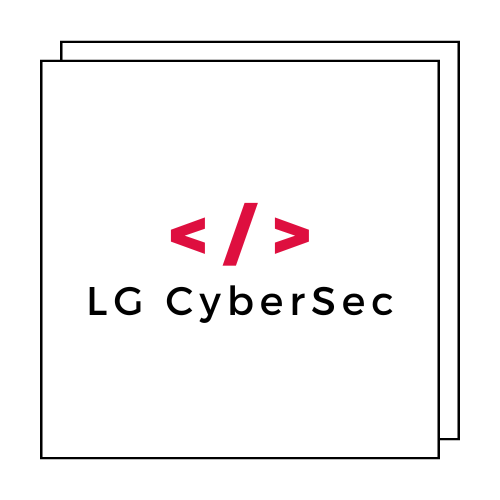In October 2025 cybersecurity researchers uncovered one of the most extensive SMS phishing (smishing) operations ever documented. The threat group known as the Smishing Triad has been linked to an astounding 194,000 malicious domains used in a global phishing campaign that threatens businesses and consumers worldwide. This sophisticated operation represents a quantum leap in the scale and complexity of mobile-based cyber threats.
For small and medium-sized businesses (SMBs), this discovery serves as a critical wake-up call. The Smishing Triad’s operation demonstrates how cybercriminals are evolving their tactics to exploit our increasing reliance on mobile devices for business communications and transactions.
Understanding this threat and implementing robust defenses has never been more crucial for protecting your business, employees, and customers from these increasingly sophisticated attacks.
Understanding the Smishing Triad: A New Level of Cybercrime
The Smishing Triad represents a highly organized cybercriminal network that has revolutionized SMS-based phishing attacks. Research conducted by Palo Alto Networks’ Unit 42 team reveals that this group operates with unprecedented scale and sophistication, managing hundreds of thousands of malicious domains to support their global phishing infrastructure.
Unlike traditional phishing operations that rely primarily on email, the Smishing Triad focuses on SMS messages to deliver malicious links. This approach is particularly effective because:
- Mobile users are more likely to trust and click on SMS links
- SMS messages bypass traditional email security filters
- Mobile screens make it harder to identify suspicious URLs
- People often check SMS messages immediately, creating urgency
The group’s infrastructure spans multiple countries, with domains registered through Hong Kong-based registrars and utilizing Chinese nameservers, while the actual attack infrastructure operates globally. This distributed approach makes it extremely difficult for law enforcement and cybersecurity professionals to shut down their operations completely.
The Staggering Scale: 194,000 Malicious Domains
The sheer number of domains controlled by the Smishing Triad is unprecedented in cybersecurity history. These 194,000 malicious domains serve multiple purposes within their criminal ecosystem:
Domain Rotation Strategy: The group constantly rotates between different domains to evade detection and blacklisting efforts. When security systems block one domain, attackers simply switch to another from their vast pool of alternatives.
Geographic Targeting: Different domains are used to target specific regions or countries, allowing the group to customize their attacks based on local languages, currencies, and popular services in each area.
Service Impersonation: The domains are designed to mimic legitimate services such as postal services, banks, government agencies, and popular online platforms. This makes it easier to deceive victims into believing the messages are authentic.
For SMBs, this massive domain infrastructure means that traditional security measures like domain blacklists become less effective. By the time a malicious domain is identified and blocked, the attackers have likely moved on to dozens of others.
How the Smishing Triad Targets Businesses and Consumers
The Smishing Triad’s attack methodology is both sophisticated and adaptable. Their campaigns typically follow these patterns:
Initial Contact: Victims receive SMS messages that appear to come from trusted organizations. These messages often create a sense of urgency, claiming issues with deliveries, account security, or payment problems.
Credential Harvesting: When victims click the malicious links, they’re directed to convincing fake websites that collect login credentials, personal information, or financial details.
Data Monetization: Stolen information is either used directly for financial fraud or sold to other cybercriminals on dark web marketplaces.
Small businesses are particularly vulnerable because they often lack the robust cybersecurity infrastructure of larger organizations. Employees may use personal devices for work-related activities, making it easier for smishing attacks to infiltrate business networks and systems.
The group’s success stems from their ability to impersonate services that people interact with regularly, such as:
- Shipping and logistics companies
- Banking and financial institutions
- Government tax agencies
- Popular e-commerce platforms
- Telecommunications providers
The Business Impact: Why SMBs Must Take Action
The Smishing Triad’s operations pose significant risks to small and medium-sized businesses beyond just direct financial losses. The potential impacts include:
Data Breaches: When employees fall victim to smishing attacks using work devices or accounts, sensitive business data can be compromised. This may include customer information, financial records, or proprietary business intelligence.
Financial Losses: Direct financial theft through compromised banking credentials can devastate small businesses with limited cash reserves. Additionally, businesses may face costs related to incident response, legal fees, and regulatory fines.
Reputation Damage: If customer data is compromised through a smishing attack, businesses may suffer long-term reputation damage that affects customer trust and retention.
Operational Disruption: Recovering from a successful smishing attack can require significant time and resources, disrupting normal business operations and productivity.
According to recent cybersecurity studies, small businesses are three times more likely to be targeted by cybercriminals because they typically have weaker security measures compared to larger enterprises. The Smishing Triad’s massive infrastructure makes them capable of targeting thousands of businesses simultaneously.
Essential Protection Strategies for SMBs
Protecting your business from the Smishing Triad and similar threats requires a multi-layered approach that combines technology, policies, and employee education:
Employee Training and Awareness: Regular cybersecurity training is crucial for helping employees identify and respond to smishing attempts. Training should cover:
- How to identify suspicious SMS messages
- The importance of verifying sender authenticity through alternative channels
- Safe practices for clicking links and entering credentials
- Immediate reporting procedures for suspected attacks
Technical Controls: Implement robust technical safeguards across your organization:
- Mobile device management (MDM) solutions for work devices
- Multi-factor authentication (MFA) for all business accounts
- Regular software updates and security patches
- Network monitoring and anomaly detection systems
Policy Development: Establish clear policies regarding mobile device usage and SMS communications in your business environment. These policies should address when and how employees should respond to unsolicited messages.
Working with experienced cybersecurity professionals can help ensure your defenses are properly configured and maintained. LG CyberSec specializes in helping small and medium businesses develop comprehensive security strategies tailored to their specific needs and risk profiles.
Recognizing and Responding to Smishing Attacks
Early detection is crucial for minimizing the impact of smishing attacks. Train your team to watch for these common warning signs:
Message Characteristics:
- Urgent language demanding immediate action
- Generic greetings like “Dear Customer” instead of your name
- Unusual sender numbers or suspicious short codes
- Poor grammar or spelling errors in professional communications
- Requests for sensitive information via SMS
URL Red Flags:
- Shortened URLs that hide the actual destination
- Domain names that mimic legitimate sites with slight variations
- HTTP instead of HTTPS for sites requesting sensitive information
- Unusual top-level domains (.tk, .ml, .cf) often used by scammers
Response Procedures: When employees suspect a smishing attempt, they should:
- Not click any links or provide any information
- Screenshot the message for documentation
- Report the incident to your IT security team immediately
- Verify the legitimacy through official channels if needed
- Delete the suspicious message
Having a documented incident response plan ensures your team knows exactly how to react when threats are identified, minimizing confusion and potential damage.
The Future of Mobile Security: Staying Ahead of Evolving Threats
The Smishing Triad’s sophisticated operation represents just the beginning of what security experts predict will be an significant increase in mobile-based cyber threats. As businesses continue to embrace mobile technologies and remote work arrangements, the attack surface for cybercriminals continues to expand.
Emerging trends that SMBs should prepare for include:
AI-Enhanced Attacks: Cybercriminals are beginning to use artificial intelligence to create more convincing phishing messages and automate large-scale campaigns.
Cross-Platform Integration: Future attacks may combine SMS, email, and social media elements to create more convincing and persistent campaigns.
IoT Device Targeting: As businesses adopt more Internet of Things (IoT) devices, these may become new vectors for smishing and other mobile-based attacks.
Staying ahead of these evolving threats requires continuous monitoring of the cybersecurity landscape and regular updates to your defensive strategies. Consider partnering with cybersecurity experts who can provide ongoing threat intelligence and security updates specific to your business needs.
For comprehensive cybersecurity solutions designed specifically for small and medium businesses, LG CyberSec offers expert guidance and proven strategies to protect against the latest threats.
Building Long-Term Resilience Against Cyber Threats
The discovery of the Smishing Triad’s massive operation underscores the importance of building long-term cybersecurity resilience rather than relying on reactive measures alone. Successful businesses in 2025 and beyond will be those that invest in comprehensive security programs that evolve with the threat landscape.
Key elements of a resilient cybersecurity strategy include:
Regular Risk Assessments: Conduct quarterly assessments to identify new vulnerabilities and ensure your defenses remain effective against emerging threats.
Continuous Employee Education: Cybersecurity training shouldn’t be a one-time event. Regular updates and refresher sessions help maintain awareness as threats evolve.
Technology Investment: Budget for security technologies and services as a core business expense, not an optional add-on.
Incident Response Planning: Develop and regularly test plans for responding to various types of cyber incidents, including smishing attacks.
Vendor Management: Ensure that third-party vendors and partners maintain adequate security standards that don’t compromise your business.
The key is to view cybersecurity as an ongoing business process rather than a one-time implementation. Regular reviews and updates ensure your defenses remain effective as both your business and the threat landscape continue to evolve.
Conclusion: Take Action Before It’s Too Late
The Smishing Triad’s connection to 194,000 malicious domains represents a watershed moment in mobile cybersecurity threats. This massive operation demonstrates that cybercriminals are operating at unprecedented scales and with sophisticated infrastructure that can overwhelm traditional security measures.
For small and medium-sized businesses, the message is clear: waiting until after an attack occurs is no longer an option. The scale and sophistication of modern threats like the Smishing Triad require proactive, comprehensive security strategies that address both technological vulnerabilities and human factors.
The most effective defense combines employee education, robust technical controls, clear policies, and ongoing security monitoring. While the threat landscape continues to evolve, businesses that invest in comprehensive cybersecurity strategies position themselves to detect, respond to, and recover from attacks more effectively.
Don’t wait for your business to become the next victim. Take action now to assess your current security posture and implement the necessary improvements to protect against smishing and other mobile-based threats. Your business’s future may depend on the security decisions you make today.
For expert assistance in developing a comprehensive cybersecurity strategy tailored to your business needs, contact LG CyberSec today. Our team specializes in helping SMBs build robust defenses against the latest cyber threats, including sophisticated operations like the Smishing Triad.

